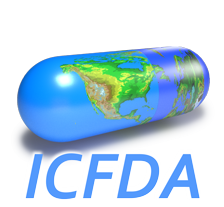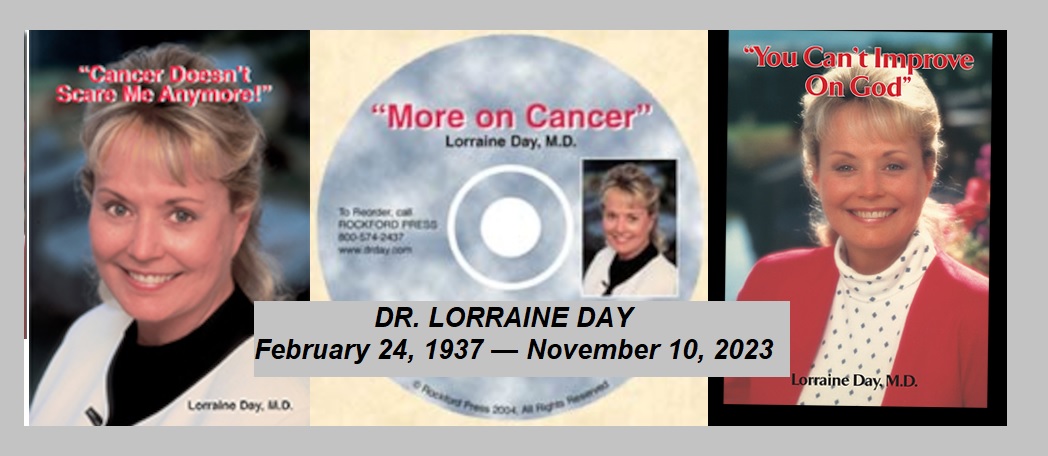NOTE FROM Ann Blake-Tracy (www.drugawareness.org):
Would you like a little Prozac or Zoloft with your water???
A Decade Later Additional Heightened Concerns About Pharmaceuticals inWater
An absolutely EXCELLENT article on this issue!!!! This kind of concern was first raised a decade ago in 2000. We sent out the information far and wide then. Clearly few knew enough to be concerned. But now with further study the results are shockingly confirming all we warned of in 2000! Those results are especially telling when it comes to fish being given low doses of Prozac . . . the bizarre changes inbehavior, etc.
DO NOT sit around and say it is only fish, there is no need to worry. Our entire world is balanced with each species playing an extremely important role. We do not survive if they do not survive!
And be sure to note what is said about the chlorine/flouride additives to our water when combined with these drugs! Snyder, the Arizona expert, is stating that we as humans are exposed to more of these disinfecting chemicals in our water than anything while they are so “understudied.” The truth about chemicals is that we know SO LITTLEabout any of them that we have absolutely no idea what we are exposing ourselves and our posterity to and where it could lead us as a society. Tragically the mess inwhich we now find ourselves could be a warning of what is to come if we do not wake up soon to our own insane belief system of “Better Living Through Chemistry”! We are quickly learning that we are far from invincible!!
Find below some of the highlights of this article that need to be emphasized:
– Bryan Brooks has spent a lot of time wading in Pecan Creek, a small Denton stream, searching for mutant fish. For some time, Brooks and his colleagues from the University of North Texas were observing strange things in North Texas fish—males turning into females, for example—but were unable to blame them on traditional waterpollutants like metals. The environmental toxicologists thought the mutations might have something to do with other compounds like pharmaceuticals that were showing up in freshwater streams.
Over time, they collected a bunch of fish and tested their flesh in the lab. Sure enough, they found fluoxetine (Prozac) and sertraline (Zoloft) and their human metabolites in every catfish, crappie and bluegill they tested. It was the first time researchers had proved that these human drugs were showing up in wild fish.
– Toxicologists have just begun the difficult task of figuring out what effects these contaminants might have on human health. A single contaminant might do nothing. Butin combination with others, the effect could be enhanced, particularly for vulnerable groups like children or pregnant women. What sort of health effects arise from complex mixtures of chemicals in drinking water?
 photo courtesy Baylor University Bryan Brooks
photo courtesy Baylor University Bryan Brooks
Bryan Brooks has spent a lot of time wading in Pecan Creek, a small Denton stream, searching for mutant fish. For some time, Brooks and his colleagues from the University of North Texas were observing strange things in North Texas fish—males turning into females, for example—but were unable to blame them on traditional waterpollutants like metals. The environmental toxicologists thought the mutations might have something to do with other compounds like pharmaceuticals that were showing up in freshwater streams.
Over time, they collected a bunch of fish and tested their flesh in the lab. Sure enough, they found fluoxetine (Prozac) and sertraline (Zoloft) and their human metabolites inevery catfish, crappie and bluegill they tested. It was the first time researchers had proved that these human drugs were showing up in wild fish.
Brooks (now at Baylor University) is part of a growing legion of scientists and regulators studying “emerging contaminants,” a loose definition of chemicals that include prescription and over-the-counter drugs, flame retardants, animal hormones, pesticides, plasticizers and cosmetics, to name a few. Many of these unregulated contaminants pass through wastewater treatment plants and end up in streams, exposing fish and other aquatic life to an exotic chemical cocktail.
More worrisome: The same chemical-infused water ends up in our drinking water.
Take Pecan Creek. During dry spells, Pecan Creek consists of effluent from Denton’s wastewater treatment plant. The stream then flows into Lake Lewisville, a drinkingwater supply for millions in Dallas-Fort Worth. The toilet-to-tap phenomenon is becoming more common as cities look to recycled wastewater to offset diminishing freshwater supplies.
Dallas, like dozens of other cities in Texas and around the nation, has detected trace amounts of emerging contaminants in its water supplies.
“You name the compound; somebody has probably found it in somebody’s watersource or the effluent coming out of the [treatment plant],” says Charles Stringer, an assistant director of Dallas Water Utilities.
The same holds for tap water. Unwittingly, Americans are drinking a cornucopia of chemicals—albeit in tiny amounts—that in many cases we know little about.
In the most comprehensive, peer-reviewed study to date, the Southern Nevada WaterAuthority tested the tap water of 15 utilities that collectively serve 28 million Americans. Thirteen had measurable levels of contaminants, including the anti-convulsant phenytoin, the pesticide atrazine and the insecticide DEET.
Such reports have roused public concern and convinced the federal government to take a tentative step. In October, the EPA announced it’s considering pharmaceuticalsfor regulation under the Safe Drinking Water Act.
In Texas, water utilities and elected officials are only beginning to grapple with the problem. A task force created by the Texas Legislature in 2009 is looking into ways to keep pharmaceuticals out of landfills and wastewater systems. On the local level, cities are not required by federal law to test wastewater or drinking water plants for emerging contaminants. Many choose not to, partly out of fear that the results will be misinterpreted.
“If you say you’ve got aspirin in your water at one picogram per liter, somebody says, oh my god there’s aspirin in the water,” Stringer says. “The cities that are trying to be proactive and look at it are getting the hell beat out of them.”
Dallas is proactive, Stringer says. In November, the U.S. Geological Survey published the results of extensive sampling in the Elm Fork of the Trinity River, a drinking watersource for Dallas that is downstream from other cities’ discharges. The scientists also tested the water after it had been treated for people’s taps. The federal agency found that 38 of the 42 most frequently detected compounds in the river water—including the pesticide atrazine, the gasoline additive MTBE (banned in some states) and the toxic insecticide Diazinon, whose sale is illegal for non-agricultural purposes—made it into the tap water. While the concentrations didn’t exceed federal or state standards, the study notes that only half of the detected compounds have human-health benchmarksin those standards.
The city of San Marcos commissioned Texas State University toxicologist Glenn Longley and one of his students to test surface water there for 23 emerging contaminants—pharmaceuticals, fire retardants, fragrances, pesticides and others. While Longley found 18 chemicals in the water, only one—bisphenol A, or BPA, the controversial plasticizer found in Nalgene bottles—made it into the city’s tap water.
Most of these contaminants are not new. Some have been “emerging” in the environment for decades. But the development of ultrasensitive instruments has now enabled scientists to detect the compounds at concentrations down to parts per trillion. It’s as if a powerful new telescope suddenly picked up a galaxy in a previously dark part of the sky—the difference being that these chemicals hit uncomfortably close to home.
Toxicologists have just begun the difficult task of figuring out what effects these contaminants might have on human health. A single contaminant might do nothing. Butin combination with others, the effect could be enhanced, particularly for vulnerable groups like children or pregnant women. What sort of health effects arise from complex mixtures of chemicals in drinking water?
No one knows. One challenge, among many, is that it’s difficult to perform toxicity tests for humans. “It’s not like on the aquatic side,” says Dana Kolpin, head of the U.S. Geological Survey’s Emerging Contaminants in the Environment Project. “We’re doing experiments with biologists where we’re exposing minnows or other organisms to, say, effluent or spike levels. You just can’t do that with humans.”
Shane Snyder, a professor of environmental engineering at the University of Arizona and co-director of the Arizona Laboratory for Emerging Contaminants, says he’s been asked to brief a Congressional committee on this issue. It’s “very difficult” to do a risk assessment for mixtures, he says, especially when chemicals can simultaneously act on different pathways in the body. For example, one substance might damage the liver, while another present at the same time disrupts the endocrine system.
“You could get a more profound effect [collectively] than from each one separately,” says Snyder.
Snyder says there’s far more to learn—and perhaps fear—from what happens when emerging contaminants go through the treatment process. Some seem to disappear, but they could be subtly transformed into something more toxic by widely used disinfectants like chlorine.
“In my mind there is no question that humans are exposed to more disinfection byproducts than any other contaminants through their drinking water,” Snyder says. “Itconcerns me as a scientist and a toxicologist that those classes of compounds are understudied.”
About 20 percent of disinfection byproducts are regulated, Snyder says. Sixty percent haven’t even been identified.
While the effects on humans remain mysterious, the ecological effects of water-borne chemicals—even at extremely low levels—is becoming well established. And those effects can be downright bizarre.
Toxicologists and biologists have linked low concentrations of pharmaceuticals and other emerging contaminants to a host of developmental, reproductive and behavioral problems in aquatic species including algae, mussels, minnows and game fish. Astudy published in 2008 by researchers at Clemson University exposed hybrid striped bass to relatively low levels of Prozac.
The results were depressing—the more Prozac in the water, the longer it took the bass to nail their prey. The fish acted strangely, too, hovering near the surface of the aquarium, sometimes with their dorsal fins poking out of the water. Others floated vertically, tails down and mouths above the water level, like a kid dog-paddling in apool.
Antidepressants like Zoloft and Prozac work in humans by increasing serotonin, anatural chemical that helps regulate brain activity and is linked to feelings of well-being.In bass, among other functions, serotonin plays a pivotal role in feeding behavior. Changes in serotonin levels can tilt the predator-prey balance and affect not just the individual, but potentially the whole ecosystem.
It’s not just antidepressants that can make aquatic life go haywire. Even infinitesimally small amounts of the synthetic estrogen in birth control drugs can induce sex reversalsin male fish and disrupt reproduction. Canadian scientists brought an entire ecosystem to the brink of collapse by introducing estrogen—at levels frequently found inmunicipal wastewater—to an experimental lake in northern Ontario.
In 2008, a researcher for Johnson & Johnson calculated that toxic effects on fish from estrogenic substances could be expected at concentrations as low as 350 parts per quadrillion.
“If you can imagine 350 parts per quadrillion,” Snyder says, “it’s unimaginably small, but yet it can have a measurable impact on fish.”
Snyder points out that well-documented impacts on wildlife are often misinterpreted to mean humans are at risk from the same levels.
“The part where people get a little bit confused is they say, well if it can impact a fish, then certainly it could impact a human,” Snyder says. “That’s just not true. You’re comparing apples to oranges.”
Consider pharmaceuticals. Drug developers are required to submit reams of pharmacological information to the Food and Drug Administration proving their drugs are safe and work as intended. They’re tested on people. The levels found in game fish and drinking water supplies, so far, are thousands of times below therapeutic levels.
Brooks provides an illustration. In a national pilot survey of five effluent-dominated rivers, the highest level of antidepressant he and the EPA found in fish tissue wasabout 19 nanograms of Zoloft per liter in a fish outside Philadelphia.
“It would take me 3,500 meals of that fish to reach one daily dose of sertraline,” Brooks says. Likewise, someone would have to drink millions of liters of tap water to reach a single dose of Zoloft.
“From what I’ve seen in the developed world, I’m just not as concerned about human health right now. I think the highest relative risk is to aquatic life,” he says.
Utility managers are sticking to that point. “What we’ve been told to tell people is that these minute traces of organics are below any known health effects,” Stringer says.
Regardless, Dallas is planning to upgrade its drinking water plants to include ozonation and biological filtration, advanced but costly processes. The utility isn’t doing it primarily to deal with emerging contaminants, but that will be an added benefit.
“What we’re hoping to see is very little organic material coming out and going into the distribution system for consumption,” Stringer says.
If a city wants to eliminate virtually all contaminants, it would need to install advanced systems like reverse osmosis, which is extraordinarily expensive.
That’s not feasible, Snyder says.
“We just can’t put the whole world’s water supply through reverse osmosis because we’re worried about emerging contaminants,” he says. “It’s going to fail. Just on the energy alone, it will fail.”
With 80,000 chemicals registered for use in the United States and new ones coming to market every year, the key could be keeping the most dangerous ones out of the environment in the first place. For thousands of chemicals, there are “zero data” on their toxicity, Brooks says.
The European Union has implemented a sweeping system called Registration, Evaluation and Authorization of Chemicals, or REACH. The system requires testing thousands of old and new chemicals for human and environmental toxicity, and could lead to bans on high-risk chemicals that aren’t regulated in the United States.
Given the power of the pharmaceutical and chemical industries in this country, such asystem seems like a far-off goal. Jacobs, the environmental activist on the Texas pharmaceutical task force, says his group is advocating for something far more modest: manufacturer take-back programs in which consumers could return unused or expired drugs to pharmacies for proper disposal. He says the pharmaceutical interests on the task force are doing their best to discredit the idea.



